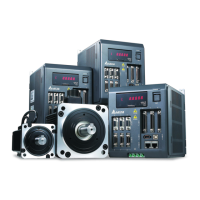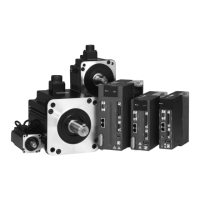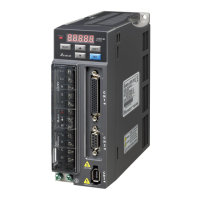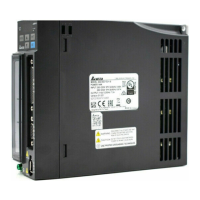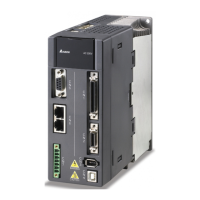Application Examples ASDA Series Application Note
3-106 March, 2015
marks will be compared with the standard pulse number set by P5-78 and be calculated the
difference. The difference will be saved in P5-79 and applied by the camshaft to adjust the
error.
P5-80 can set the correction rate which is for correcting the value of P5-79. The bigger
P5-80 is, the faster P5-79 can be to reach zero. However, the speed variation will be
greater. Some mechanism does not allow such huge correction within the short time. Users
need to set up the value according to the real situation.
Figure 3.8.6 Operational Theorem of Synchronous Capture Axis
The main task of synchronous capture axis is to adjust the error which is long-term accumulated.
Therefore, the correction rate of P5-79 should be around zero, which value is either positive or
negative. When the value is increasing or continuous decreasing and cannot back to zero, it
means the mechanism might need to be re-adjusted. Or improper setting or pulse loss caused by
the noise might also be the reason.
Figure 3.8.7 shows the PR setting that the cam uses the synchronous axis as the source of
master axis:
PR#21: Synchronous capture axis must read the mark, thus the function of reading marks must
be enabled. P5-39.Y = 2, the source of master axis is pulse command (CN1). P5-39.U = 2, the
minimum triggering intervening time is 2 ms.
PR#21: Set up E-Cam. The setting of P5-88.X = 2 is that after engaging, if the cam stops
because of Alarm or Servo OFF, the cam will remain engaging. The cam can operate directly
after Servo ON. P5-88.Y = 5, the source of master axis is synchronous capture axis. P5-88.Z = 2,
the engaging time is right after reading the mark. P5-88.U = C is to set the cam to cycling mode
and disable the cam after disengaging.
